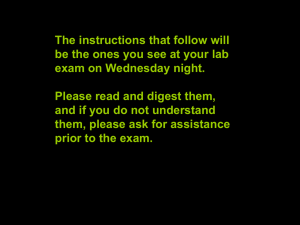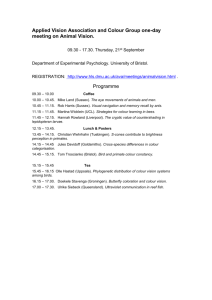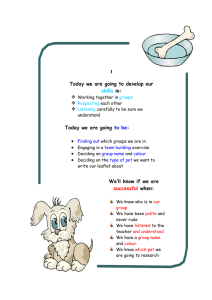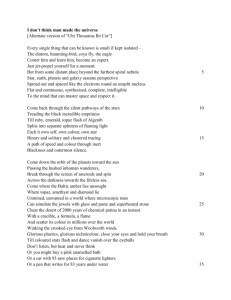Note Taking
advertisement
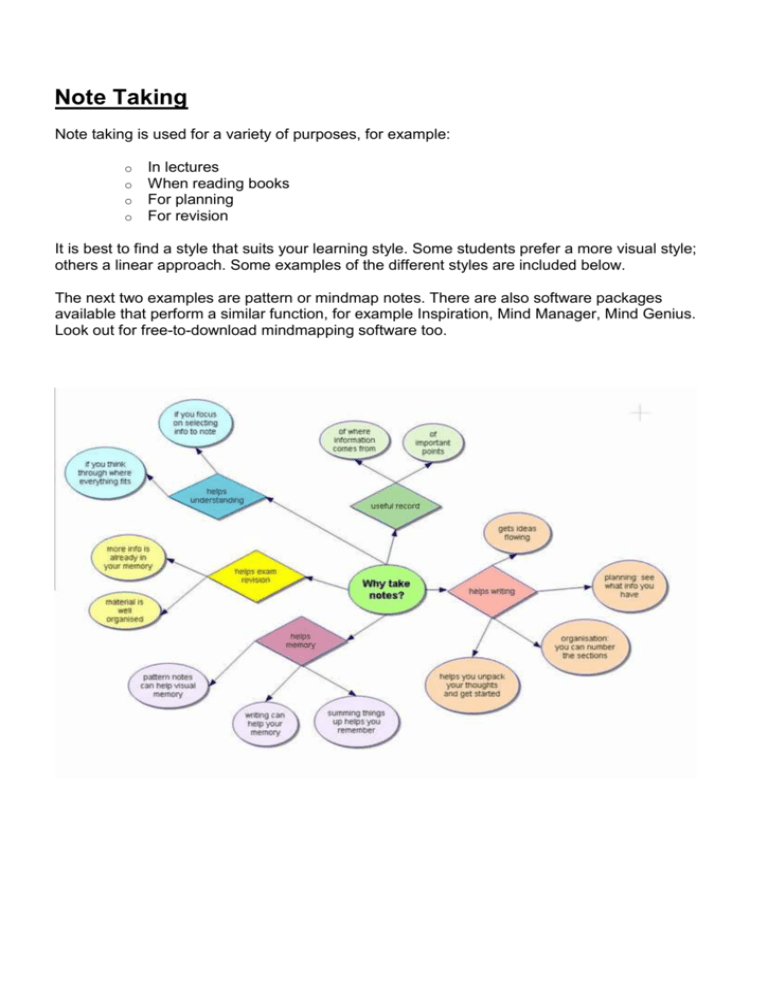
Note Taking Note taking is used for a variety of purposes, for example: o o o o In lectures When reading books For planning For revision It is best to find a style that suits your learning style. Some students prefer a more visual style; others a linear approach. Some examples of the different styles are included below. The next two examples are pattern or mindmap notes. There are also software packages available that perform a similar function, for example Inspiration, Mind Manager, Mind Genius. Look out for free-to-download mindmapping software too. Linear notes Not all dyslexic people think in a holistic way and love concept maps! Some like linear notes. This page uses a linear style. It is taken from ‘The Study Skills Handbook’ by Stella Cottrell (Palgrave 2003), which is an extremely useful book Strategies for making linear notes 1 1.1 1.2 1.3 1.4 1.5 2 2.1 2.2 2.3 2.4 2.5 2.6 2.7 2.8 2.9 Good note-making: general think before you write keep notes brief keep notes organised use your own words leave a wide margin and spaces – to add notes later Useful strategies note key words and main ideas write phrases, not sentences use abbreviations use headings number points make the page memorable – with colour, pictures etc link up points – use arrows, dotted lines, boxes, colour note sources of info exactly write quotations in a different colour 3 3.1 3.2 3.3 4 4.1 4.2 4.3 4.4 Unhelpful strategies copying chunks writing more notes than you can use again writing out notes several times to make them neater Tidying messy notes draw a box round sections of notes in different colours to make them stand out use a ruler to divide the page up between sections draw a ring round floating bits of information link stray information by colour-coding it


